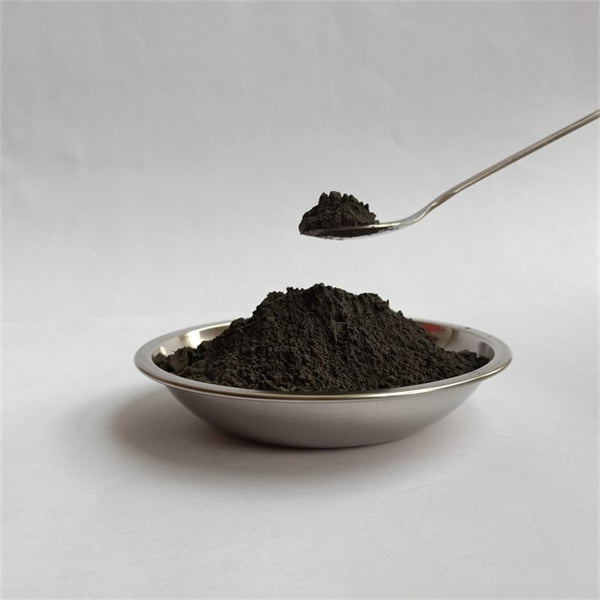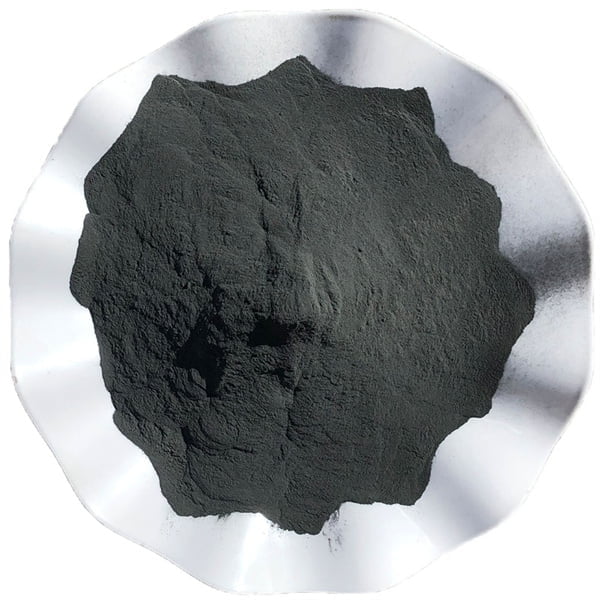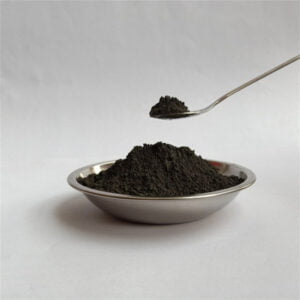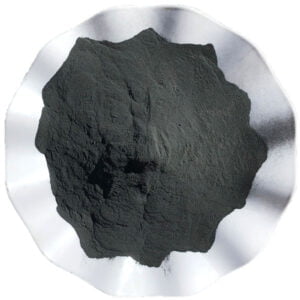Pulver för 3D-utskrift av metall
Innehållsförteckning
Översikt över Pulver för 3d-utskrift av metall
3D-printpulver för metall avser det råmaterial som används i olika additiva tillverkningsprocesser för metall för att producera tredimensionella metalldelar lager för lager. Till skillnad från traditionell subtraktiv tillverkning som tar bort material, bygger additiv tillverkning upp komponenter genom att smälta och smälta samman material baserat på en digital 3D-modell.
Metallpulver som används vid 3D-printing gör det möjligt att tillverka komplicerade, lätta och högpresterande metalldelar med komplexa geometrier som är svåra eller omöjliga att tillverka med konventionella metoder. De vanligaste 3D-utskriftsteknikerna för metall som använder metallpulver inkluderar:
- Direkt metallsintring med laser (DMLS) - Använder en laser för att selektivt smälta och smälta samman lager av metallpulver baserat på en 3D CAD-modell.
- Smältning med elektronstråle (EBM) - Använder en elektronstråle i vakuum för att smälta och smälta samman pulver lager för lager.
- Binder Jetting - Flytande bindemedel deponeras selektivt för att sammanfoga pulvermaterial, som senare infogas med brons i en sintringsugn.
Typer av pulver för 3D-utskrift av metall
| Metall | Beskrivning | Fastigheter | Tillämpningar |
|---|---|---|---|
| Rostfritt stål | Det mest använda metallpulvret inom 3D-printing tack vare sin kombination av prisvärdhet, korrosionsbeständighet och svetsbarhet. Vanliga kvaliteter är 316L (marin kvalitet), 17-4 PH (hög hållfasthet och utskiljningshärdning) och 304 (allmänt ändamål). | - Utmärkt korrosionsbeständighet - Hög hållfasthet - God duktilitet - Biokompatibel (vissa kvaliteter) | - Flyg- och rymdkomponenter (icke-kritiska) - Medicinska implantat och apparater - Kemisk processutrustning - Bildelar - Smycken |
| Titan | En höghållfast metall med låg vikt som uppskattas för sin biokompatibilitet och sitt utmärkta förhållande mellan styrka och vikt. Den vanligaste legeringen är Ti6Al4V (titan 6% aluminium, 4% vanadin). | - Högt förhållande mellan styrka och vikt - Utmärkt korrosionsbeständighet - Biokompatibel - Hög smältpunkt | - Flyg- och rymdkomponenter (kritiska) - Biomedicinska implantat (knäproteser, benplattor) - Marina komponenter - Sportartiklar (golfklubbor, cyklar) |
| Aluminium | En lättviktig och prisvärd metall med god ledningsförmåga och bearbetbarhet. Vanliga legeringar är 6061 (för allmänna ändamål), 7075 (höghållfast) och 2024 (för flyg- och rymdindustrin). | - Lättvikt - God ledningsförmåga - Utmärkt bearbetbarhet - Återvinningsbar | - Bildelar (ramar, hjul) - Flyg- och rymdkomponenter (icke-kritiska) - Konsumentelektronik - Kylflänsar |
| Nickellegeringar | En klass av högpresterande legeringar som är kända för sin exceptionella värmebeständighet, korrosionsbeständighet och mekaniska styrka. Vanliga varianter är Inconel 625 (enastående motståndskraft mot tuffa miljöer) och Inconel 718 (hög hållfasthet vid förhöjda temperaturer). | - Exceptionell värmebeständighet - Utmärkt korrosionsbeständighet - Hög hållfasthet vid förhöjda temperaturer - Oxideringsbeständighet | - Komponenter till gasturbinmotorer - Värmeväxlare - Kemisk processutrustning - Kärnreaktorer |
| Kobolt Krom | En biokompatibel legering som ofta används för sin styrka, korrosionsbeständighet och slitstyrka. | - Hög hållfasthet - Utmärkt slitstyrka - God korrosionsbeständighet - Biokompatibel | - Biomedicinska implantat (ledproteser, tandimplantat) - Skärande verktyg - Slitplattor |
| Verktygsstål | En grupp stål som är framtagna för specifika verktygstillämpningar som skärning, formning och klippning. Vanliga typer är H13 (verktygsstål för varmbearbetning) och A2 (verktygsstål för kallbearbetning). | - Hög hårdhet - Slitstyrka - Dimensionsstabilitet - Seghet (beroende på typ) | - Skärande verktyg - matriser och formar - stansar och saxar - slitdelar |
| Ädelmetaller | Mindre vanligt vid 3D-utskrifter i metall på grund av den höga kostnaden, men erbjuder unika egenskaper som hög elektrisk ledningsförmåga, korrosionsbeständighet och biokompatibilitet. Exempel är guld, silver och platina. | - Hög elektrisk ledningsförmåga - Utmärkt korrosionsbeständighet - Biokompatibel (vissa typer) - Hög reflektionsförmåga (beroende på metall) | - Elektriska kontaktdon - Smycken - Biomedicinska implantat (begränsad användning) - Högpresterande kylflänsar |

Produktion av metallpulver
| Etapp | Process | Beskrivning | Kvalitetskontroll |
|---|---|---|---|
| Förvärv av råmaterial | Val av material | Val av högkvalitativa råmaterial som titan, stål eller aluminiumlegeringar i olika renhetsgrader för att uppfylla önskade egenskaper hos den slutliga detaljen. | Analys av kemisk sammansättning med hjälp av tekniker som röntgenfluorescens (XRF) eller optisk emissionsspektrometri (OES) |
| ** | Förbearbetning** | Krossning och malning av bulkmaterial till mindre fragment för att skapa en råvara med en jämn partikelstorleksfördelning som är lämplig för vidare bearbetning. | Analys av partikelstorlek med hjälp av siktning eller laserdiffraktion för att säkerställa rätt råmaterial för finfördelning. |
| Atomisering | Atomisering av gas** | Smält metall sprutas in i en högtrycksström av inert gas, vilket skapar en fin dimma som snabbt kyls och stelnar till sfäriska metallpartiklar. | Analys av partikelstorleksfördelning, morfologi (form) och flytbarhet med hjälp av laserdiffraktion och flödesmätare för att säkerställa optimala pulveregenskaper. |
| ** | Vattenatomisering** | Påminner om gasatomisering, men smält metall sprutas in i en högtrycksvattenström. Denna metod används i allmänhet för mindre reaktiva metaller som aluminium. | Liknande kvalitetskontrollåtgärder som vid gasatomisering för att säkerställa konsekventa partikelegenskaper. |
| Efterbearbetning | Screening och klassificering** | Pulver passerar genom siktar för att avlägsna över- eller underdimensionerade partiklar, vilket ger en smal partikelstorleksfördelning för optimalt tryck. | Analys av partikelstorleksfördelning för att verifiera att önskat partikelstorleksintervall följs. |
| ** | Avdamning & rengöring** | Avlägsnande av orenheter som oxider, fukt och smörjmedel som används under finfördelningen för att säkerställa hög pulverrenhet. | Kemiska analystekniker som XRF för att mäta syrehalt och säkerställa minimalt med ytföroreningar. |
| ** | Sfäroidisering** | Valfritt steg för vissa applikationer. Pulver genomgår ytterligare bearbetning för att förbättra deras sfäriskhet, vilket leder till bättre flytbarhet och tryckbarhet. | Morfologisk analys för att bedöma partikelns rundhet och säkerställa en hög grad av sfäriskhet. |
| ** | Vakuumtorkning** | Avlägsnande av fukt som fångats i pulverpartiklarna med hjälp av en vakuumkammare för att förhindra defekter under tryckningen. | Karl Fischer-titrering för att mäta fukthalten och se till att den ligger inom det acceptabla intervallet. |
| ** | Förpackning med inert gas** | Förpacka det färdiga pulvret i en förseglad behållare fylld med en inert gas som argon för att minimera oxidation och bibehålla pulverkvaliteten under lagring och transport. | Läcktestning av behållare och analys av kvarvarande syre för att säkerställa korrekt förpackning och minimal exponering för syre. |

Metallpulver Attribut
Viktiga pulverattribut för 3D-printing är bland annat
| Parameter | Beskrivning |
|---|---|
| Partikelns form | Sfärisk, satellit, vinkelformad |
| Partikelstorlek | Vanligt intervall 10-100 mikrometer |
| Storleksfördelning | Blandning av fina och grova partiklar |
| Flytbarhet | Partiklarnas förmåga att flyta under sin egen vikt |
| Skenbar densitet | Densitet som pulver under normala förhållanden |
| Tappdensitet | Densitet efter mekanisk knackning/agitation |
| Renhet | Fri från föroreningar som oxider och nitrider |
| Mikrostruktur | Kornstorlek, fasfördelning, defekter |
| Fukthalt | Måste hållas på låg nivå, i inert atmosfär |
Partikelstorlek och -fördelning har en direkt inverkan på pulverflöde, smälteffektivitet, ytkvalitet, porositet och mekaniska egenskaper. Finare storlekar förbättrar upplösningen medan större storlekar minskar kostnaderna. En blandning är idealisk.
Pulverform och ytstruktur bestämma friktion mellan partiklar, flytbarhet, spridbarhet och bulkdensitet. Släta, sfäriska pulver flyter och sprids optimalt med hög packningsdensitet.
För att kunna kontrollera pulveregenskaper och anpassa legeringar krävs expertis inom metallurgi, pulverproduktion, additiva tillverkningsprocesser och materialvetenskap.
Tillämpningar av metallpulver för 3d-utskrift
| Industri | Tillämpning | Fördelar | Materialöverväganden |
|---|---|---|---|
| Flyg- och rymdindustrin | Lätta, höghållfasta komponenter för flygplan (t.ex. fästen, värmeväxlare) Delar till raketmotorer Bränsleinsprutare | Minskad vikt för förbättrad bränsleeffektivitet Komplexa interna geometrier för optimerad prestanda Tillverkning av komplicerade gitterstrukturer för värmeavledning | Titanlegeringar för deras exceptionella styrka/vikt-förhållande och högtemperaturprestanda Inconel för dess förmåga att motstå extrem värme och tryck Aluminiumlegeringar för lättviktskonstruktioner i icke-kritiska områden |
| Medicinsk | Anpassningsbara proteser och implantat (t.ex. höftledsproteser, tandkronor) Kirurgiska instrument med förbättrad ergonomi Biokompatibla material för byggnadsställningar för benregenerering | Personligt anpassade medicintekniska produkter som passar perfekt till patientens anatomi Porösa strukturer för att främja beninväxt för bättre osseointegration Minskat behov av invasiva operationer med patientspecifika instrument | Titan och tantal för deras biokompatibilitet och utmärkta osseointegrationsegenskaper Rostfritt stål för sin styrka och korrosionsbeständighet i vissa tillämpningar Kobolt-kromlegeringar för slitstyrka i implantat som utsätts för höga påfrestningar |
| Fordon | Lättviktskomponenter för viktminskning och förbättrad bränsleekonomi (t.ex. hjul, fjädringsdelar) Högpresterande motorkomponenter Anpassningsbara racingdelar | Designfrihet för komplexa geometrier som förbättrar prestandan Snabb prototypframtagning för snabbare designiteration Produktion av begränsade upplagor eller enstaka delar | Aluminiumlegeringar för lättviktskonstruktioner med god hållfasthet Titanlegeringar för höghållfasta komponenter i applikationer med höga påfrestningar Nickellegeringar för sin förmåga att motstå extrema temperaturer och tryck |
| Konsumentvaror | Lyxiga smycken och skräddarsydda designföremål Sportartiklar i begränsad upplaga Anpassningsbara komponenter för konsumentelektronik | Produktion av invecklade och unika mönster Minskat spill jämfört med traditionell subtraktiv tillverkning Massanpassning för personifierade produkter | Ädelmetaller som guld, silver och platina för smycken av högt värde Rostfritt stål och aluminiumlegeringar för varaktiga konsumtionsvaror Koppar för dess estetiska utseende och värmeledningsförmåga i elektronik |
| Energi | * Komponenter till värmeväxlare och reaktorer * Additiv tillverkning av komplexa turbinblad * Produktion av kundanpassade delar för olje- och gasprospektering | * Högpresterande material för användning i krävande miljöer * Lättviktsstrukturer för förbättrad effektivitet * Designfrihet för optimering av värmeöverföring och vätskeflöde | Nickellegeringar för sin exceptionella hållfasthet vid höga temperaturer och korrosionsbeständighet Rostfritt stål för sin hållbarhet och tålighet mot tuffa förhållanden Inconel för dess förmåga att motstå extrem värme och tryck i kärntekniska tillämpningar |
metall 3d tryckpulver leverantörer
Det finns flera ledande globala leverantörer som tillverkar standardiserade och anpassade metallpulver specifikt för 3D-printing:
| Leverantör | Huvudkontor | Pulvermaterial |
|---|---|---|
| Sandvik | Sverige | Rostfria stål, nickellegeringar, titanlegeringar, verktygsstål |
| Snickare Tillsats | USA | Rostfritt stål, koboltkrom, koppar, nickellegeringar |
| Praxair | USA | Titan, superlegeringar av nickel, rostfritt stål |
| GKN Pulvermetallurgi | USA | Rostfritt stål, titan, aluminiumlegeringar |
| LPW-teknik | STORBRITANNIEN | Titanlegeringar, aluminiumlegeringar, rostfritt stål |
Leverantörernas förmåga att anpassa legeringskemin, modifiera pulveregenskaperna, säkerställa enhetlighet från batch till batch och samarbeta kring detaljkvaliteten är viktiga faktorer vid beslut om inköp av pulver.
Kostnader för metallpulver
| Metalltyp | Prisintervall (USD per kg) | Vanliga tillämpningar | Viktiga överväganden |
|---|---|---|---|
| Standard Metals | $50 – $100 | * Aluminium (AlSi10Mg) * Rostfritt stål (316L) * Titan (Ti6Al4V) | * Generellt kostnadseffektiva alternativ för prototyper och delar med låg belastning. * Aluminium erbjuder bra styrka-till-vikt-förhållande och bearbetbarhet. * 316L rostfritt stål är känt för sin korrosionsbeständighet. * Ti6Al4V används inom flyg- och medicinsektorn på grund av sin biokompatibilitet och sitt höga hållfasthets-/viktförhållande. |
| Högpresterande metaller | $300 – $600 | * Nickel-superlegeringar (Inconel 625) * Kobolt-krom (CoCr) * Verktygsstål (H13) | * Avsedd för applikationer som kräver exceptionella mekaniska egenskaper vid höga temperaturer eller slitstyrka. * Inconel 625 är en arbetshäst inom flygindustrin tack vare sin förmåga att motstå extrema temperaturer och bibehålla styrkan. * CoCr är populärt i medicinska implantat på grund av sin biokompatibilitet och höga hållfasthet. * H13 är en favorit för verktygstillämpningar tack vare sin exceptionella hårdhet och slitstyrka. |
| Ädelmetaller | $1,000 – $50,000+ | * Guld * Silver * Platina | * Används främst för estetiska eller högvärdiga applikationer inom smycken, elektronik och flyg- och rymdindustrin. * Guld har utmärkt elektrisk ledningsförmåga och korrosionsbeständighet. * Silver är känt för sina antimikrobiella egenskaper och höga värmeledningsförmåga. * Platina används i högtemperaturdeglar och elektriska kontakter på grund av sin smältpunkt och korrosionsbeständighet. |
| Sällsynta jordartsmetaller | Kontakta säljaren | * Yttrium * Neodym * Erbium | * Begränsad tillgänglighet och unika egenskaper driver upp kostnaderna. * Yttrium används i solid state-lasrar och supraledare. * Neodym är en viktig komponent i högeffektsmagneter. * Erbium används i fiberoptiska förstärkare och lasrar. |
Specifikationer för metallpulver
Branschstandarderna utvecklas när det gäller specifikationer, testmetoder och pulvercertifiering:
| Standard | Organisation | Omfattning |
|---|---|---|
| ASTM F3049 | ASTM International | Standardguide för karakterisering av metallpulver för AM |
| ASTM F3056 | ASTM International | Specifikation för additiv tillverkning av nickellegeringar |
| AS9100 rev D | SAE International | Kvalitetsledningssystem för flyg- och rymdindustrin |
| ISO/ASTM 52900 | ISO/ASTM | Standardterminologi för AM - Allmänna principer |
| ISO/ASTM 52921 | ISO/ASTM | Standard för metallpulver som används i DMLS/SLM |
Viktiga pulveregenskaper som partikelstorleksfördelning, flödeshastighet, densitet och sammansättning testas i enlighet med dessa specifikationer. Kunder kan kräva ytterligare testdata, batchanalysrapporter och efterlevnadscertifikat från tillverkare av metallpulver.
För- och nackdelar med metallpulver för 3D-utskrift
| Funktion | Proffs | Nackdelar |
|---|---|---|
| Designfrihet | * Möjliggör intrikata geometrier som är omöjliga med traditionella metoder. * Skapar lättviktsstrukturer med interna gitter för överlägset förhållande mellan styrka och vikt. * Möjliggör kundanpassning av delar på begäran. | * Begränsas endast av skrivarens byggvolym och programvarukapacitet. |
| Materialegenskaper | * Brett utbud av metallpulver tillgängliga, vart och ett med unika egenskaper som hög hållfasthet, värmebeständighet eller biokompatibilitet. * Delarna kan uppnå egenskaper som är jämförbara med traditionellt tillverkade metaller. | * Pulvrets egenskaper kan påverka tryckbarheten och slutproduktens kvalitet. * Vissa högpresterande metaller kräver specialiserade tryckmiljöer. |
| Produktionseffektivitet | * Minskar avfallet jämfört med subtraktiv tillverkningsteknik. * Möjliggör tillverkning av komplexa detaljer i ett enda steg, vilket eliminerar behovet av montering. * Förkortar ledtiderna för prototyper och lågvolymsproduktion. | * Inte lämplig för massproduktion på grund av långsammare utskriftshastigheter och högre materialkostnader. * Kräver noggrann efterbearbetning för att uppnå önskad ytfinish och måttnoggrannhet. |
| Säkerhet | * Vissa metallpulver kan vara farliga på grund av brandfarlighet eller toxicitet. * Kräver korrekta hanteringsrutiner och personlig skyddsutrustning (PPE) för att minimera riskerna. | * Buntade metallfilament är ett säkrare alternativ för vissa tillämpningar. * Framsteg inom pulverhanteringsteknik förbättrar säkerheten. |
| Kostnad | * Hög initial investering för 3D-skrivare för metall och pulvermaterial. * Löpande kostnader i samband med pulverhantering, underhåll och avfallshantering. | * Kan vara kostnadseffektivt för komplexa detaljer eller små serier jämfört med traditionella metoder. * Potential för minskade arbetskostnader och effektiviserade produktionsflöden. |
| Miljöpåverkan | * Minskat materialspill jämfört med subtraktiv tillverkning. * Möjlighet till produktion på begäran, vilket minimerar överskottslager och transportbehov. | * Energiintensiva tryckprocesser kan ge ett större miljöavtryck. * Avfallshantering av pulver kräver korrekt hantering för att minimera miljöpåverkan. |
Framtiden för 3D-printingpulver av metall
Viktiga trender som formar den framtida färdplanen för metallpulver:
Nya legeringar: Fler legeringsalternativ som matchar egenskaperna hos smidd aluminium och titan kommer att öka användningen i strukturella komponenter. Forskning och utveckling pågår inom höghållfasta stål, kopparlegeringar och ädelmetaller.
Förbättrade pulver: Tätare kontroller av storleksfördelning, form och mikrostruktur kommer att leda till pulver som är skräddarsydda för specifika AM-processer och applikationer. Detta förbättrar kvaliteten och materialegenskaperna.
System för återvinning: En branschöverskridande infrastruktur för att samla in, karakterisera och återanvända metallpulver i ett slutet kretslopp kommer att göra 3D-utskrifter mer hållbara.
Automatiserade arbetsflöden: Effektiviserade arbetsflöden för pulverhantering med hjälp av behållare, sensorer och automatiserade fordon kommer att förbättra säkerheten, konsekvensen och produktiviteten.
Infrastruktur för certifiering: Centraliserade institut som tillhandahåller tjänster för pulvercertifiering och kvalificering av detaljer kommer att skapa förtroende hos kritiska industrier som medicin- och flygindustrin för att införa AM.
Specialisering: Systemtillverkare, metallpulverproducenter, inköpare av delar, mjukvaruföretag och materialforskare som specialiserar sig på nischade aspekter av AM-värdekedjan kommer att driva fram fokuserad innovation.
Kostnadsminskning: Metoder som tillverkning av pulver i bulk, standardiserade legeringar, automatiserad efterbearbetning och digital lagerhantering kommer att förbättra ekonomin.
Med fortsatta framsteg inom dessa områden är industrialiseringen och den allmänna användningen av 3D-printing i metall redo för en stark tillväxt under nästa årtionde på flera viktiga marknader.

VANLIGA FRÅGOR
F: Vilket är det vanligaste metallpulvret vid 3D-utskrifter?
A: 316L rostfritt stål är det mest använda metallpulvret idag på grund av dess goda mekaniska egenskaper, svetsbarhet och korrosionsbeständighet. Andra populära alternativ är titan Ti64 och aluminium AlSi10Mg.
F: Hur väljer man rätt metallpulver för en viss applikation?
S: Viktiga faktorer att ta hänsyn till är drifttemperatur, korrosionsbeständighet, slitstyrka, hållfasthet, viktkrav, behov av ledningsförmåga, biokompatibilitet, kontakt med livsmedel och begränsningar i efterbearbetningen. Diskutera applikationsdetaljer med pulvertillverkare för legeringsrekommendationer.
F: Förbättras kvaliteten på detaljerna om man använder finare metallpulver?
S: Finare pulver (~10-45 mikrometer) förbättrar upplösning, ytfinhet och precision eftersom tunnare skikt kan smältas. Men detta sänker bygghastigheterna och ökar kostnaderna. Att blanda fina och grova partiklar ger ett balanserat tillvägagångssätt.
F: Hur hålls metallpulver säkra och fria från kontaminering under lagring och hantering?
A: Metallpulver är mycket reaktiva och benägna att oxidera. Fuktabsorption försämrar också pulverkvaliteten över tid. Därför är det viktigt med inerta gasatmosfärer, vakuumlagring, förseglade behållare och minimal exponering för syre/vatten med automatiserad pulverhantering.
F: Kan metallpulver återanvändas för att minska materialkostnaderna vid 3D-utskrifter?
S: Ja, men återanvändning har vissa villkor. Oanvänt pulver kan återanvändas, men det krävs omfattande tester för att kontrollera kontaminering, variationer i partikelstorleksfördelning eller sammansättning under flera cykler. Sådan karakterisering medför kostnader och risker.
Dela på
MET3DP Technology Co, LTD är en ledande leverantör av lösningar för additiv tillverkning med huvudkontor i Qingdao, Kina. Vårt företag är specialiserat på 3D-utskriftsutrustning och högpresterande metallpulver för industriella tillämpningar.
Förfrågan för att få bästa pris och anpassad lösning för ditt företag!
Relaterade artiklar

Högpresterande segment för munstycksvingar: Revolutionerande turbineffektivitet med 3D-utskrift i metall
Läs mer "Om Met3DP
Senaste uppdateringen
Vår produkt
KONTAKTA OSS
Har du några frågor? Skicka oss meddelande nu! Vi kommer att betjäna din begäran med ett helt team efter att ha fått ditt meddelande.

Metallpulver för 3D-printing och additiv tillverkning
FÖRETAG
PRODUKT
cONTACT INFO
- Qingdao City, Shandong, Kina
- [email protected]
- [email protected]
- +86 19116340731
















